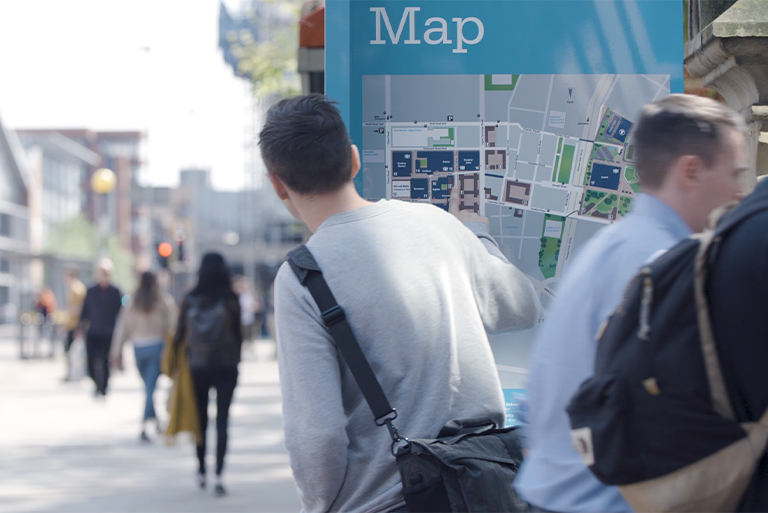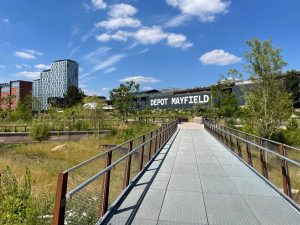The user experience is integral when building new technology products and websites. It serves as a way to simplify and streamline a user’s digital journey from point A to point B. User experience – or UX, as you may know it – is all about a user’s emotions and attitudes towards a product. It takes into account the accessibility, desirability, and value of a product, system, or service.
At Placemarque, we use these same principles in our approach to wayfinding. To create people-centric places that prioritise the occupants and visitors, you cannot understate the importance of considering the user experience.
Places are nothing without the people that bring them vibrancy, life, and character. As such, wayfinding would be nothing without putting people at the centre of all design and decision-making.

A people-first approach to places
The more complex a place – whether that is a transport interchange, retail or leisure centre, or educational campus – the more involved the planning, architecture, and wayfinding requirements will need to be. And the more moving parts there are, the more careful and targeted the user experience should be.
But, much like how user-experience in technology focuses on creating a seamless digital journey, wayfinding should make the navigation and enjoyment of complex places feel simple. Even if finding the solutions in the first place is far from it. Exceptional wayfinding should make even the most expansive spaces feel logical and easily navigable.
Considering the needs of everyone
In our view, user experience isn’t just about responding to the needs of a select few personas. Wayfinding solutions shouldn’t be designed according to the experience of the town hall planning team or the lead architect. They should instead respond to the experiences of the elderly, the parents with young children, the student who has just arrived, or the relaxed tourist with spare time on their hands. The real people that will breathe life into the space for years to come.
Experience is massively subjective and changes according to the user and their individual context. And wayfinding decisions should always factor this in. Experience is not linear, transactional, or singular; it is cumulative and organic. As such, so too must our approach to places.
Good UX for places integrates heritage, brand, usability, and function to create a memorable, positive experience for all. An experience that anticipates user needs ahead of time and incorporates solutions that put the individual at the centre. When done correctly, wayfinding creates sustainable, resilient places that can weather change over decades. And we simply could not do this without considering user experience throughout every stage of the journey.
At Placemarque, we believe UX wayfinding shouldn’t add another layer of complexity. It should be a simplification. That’s why, across all our projects, we become the voice of the user on the design team. We put people at the centre, always. If you want to find out more about what we can do for you, get in touch on 0161 241 3174




